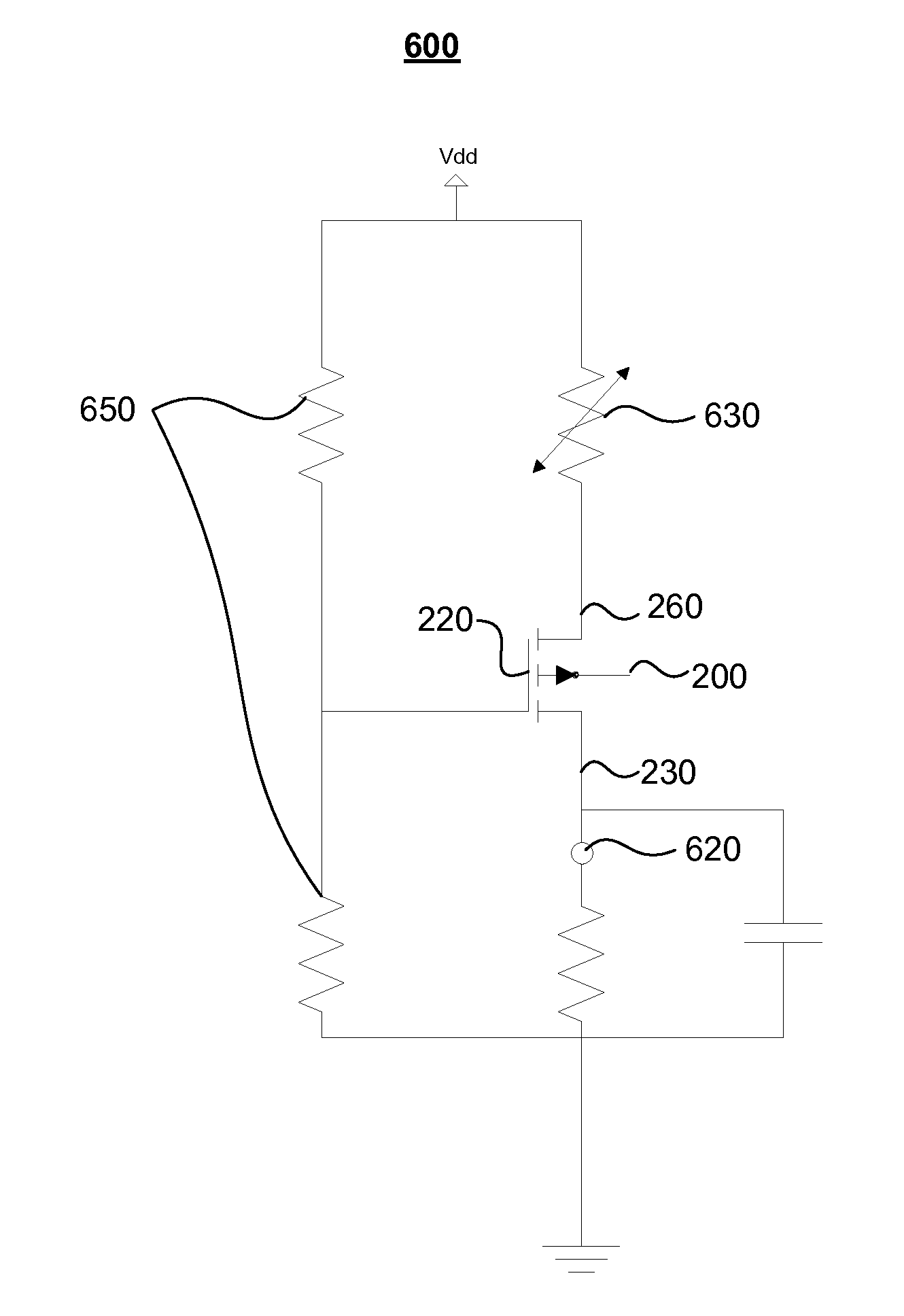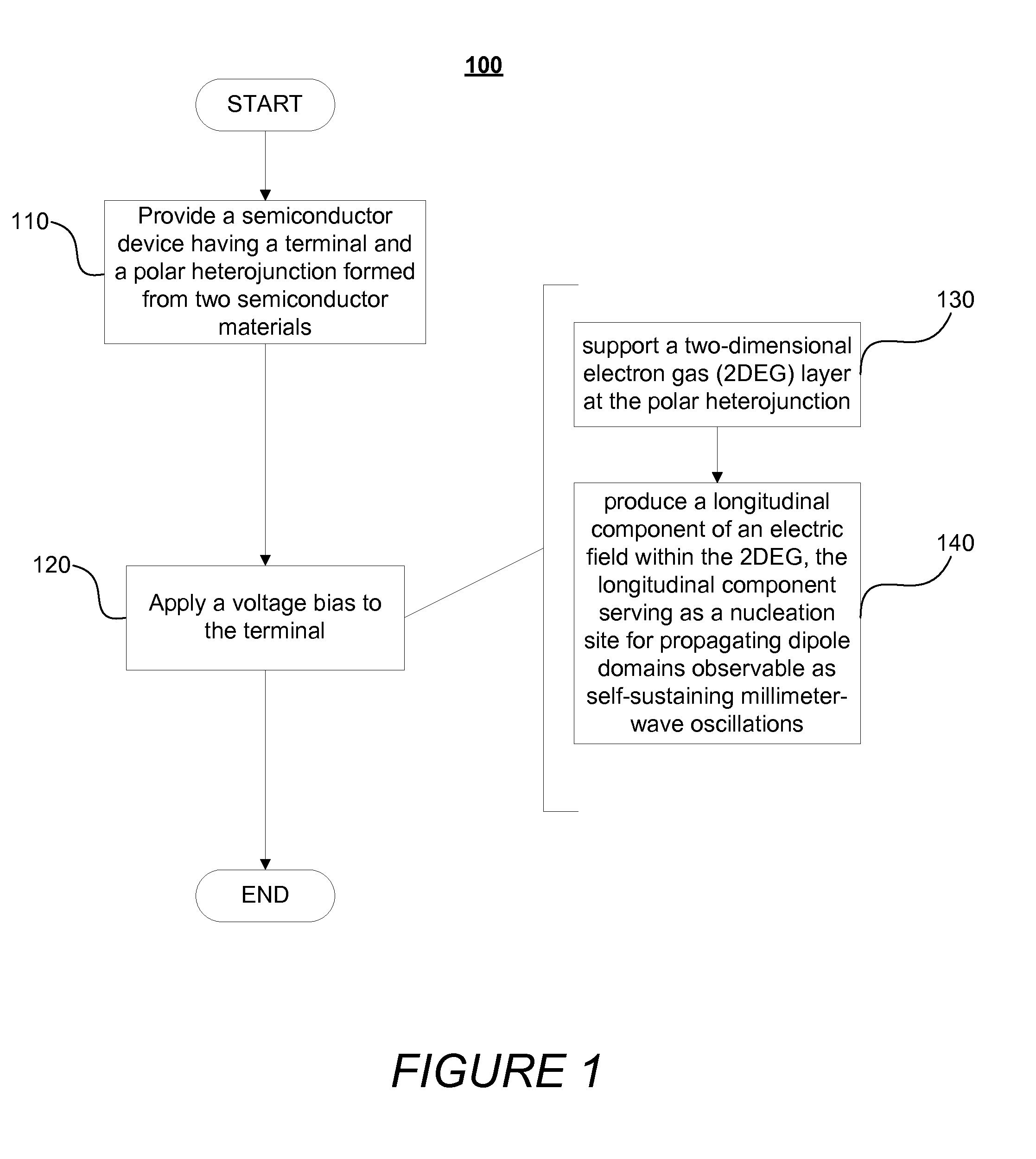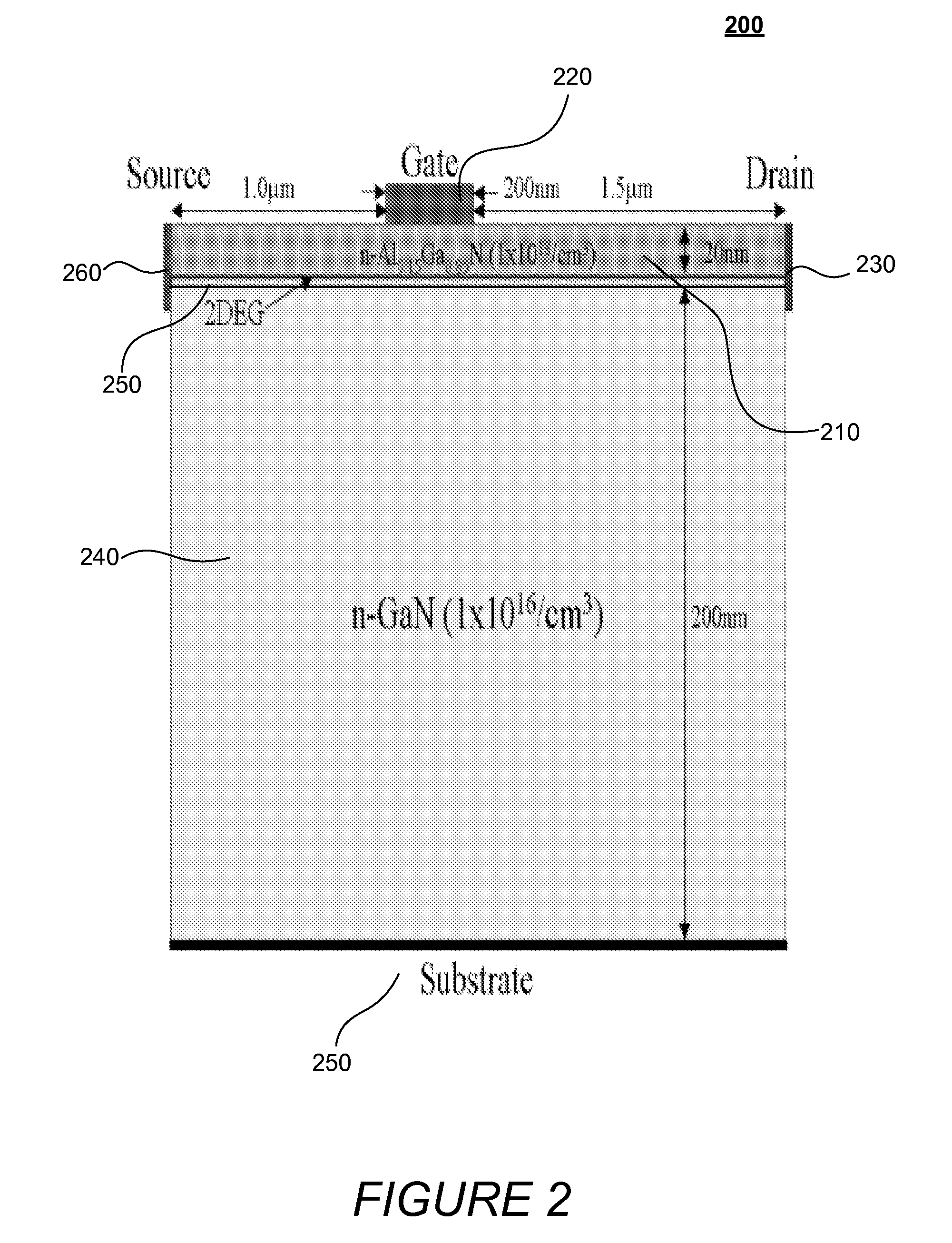Methods And Systems For Generating Millimeter-Wave Oscillations
a millimeter-wave oscillation and millimeter-wave wave technology, applied in the direction of oscillator, antenna, semiconductor device, etc., can solve the problems of generating millimeter-wave signals that are ill-suited for several of these potential applications, gunn diodes are ill-suited for several of these applications, and the millimeter-wave signals were previously thought to be ill-suited, so as to achieve a large longitudinal component of an electric field and a large longitudinal componen
- Summary
- Abstract
- Description
- Claims
- Application Information
AI Technical Summary
Benefits of technology
Problems solved by technology
Method used
Image
Examples
examples
[0043]The following case was simulated using full-band ensemble Monte Carlo simulation to study the microscopic operation of an example device, as describe herein in reference to FIG. 2. The exemplary device depicted in the two-dimensional, cross-sectional illustration of FIG. 2 includes source (cathode), drain (anode), and gate (control) electrodes. The former two contacts, in contrast to the gate electrode, are Ohmic. A relatively large gate bias served to further increase sheet electron density in the 2DEG below the gate. Through the phenomenon of field crowding, the gate electrode induced an additional large gradient in the longitudinal component of electric field at the 2DEG interface, which facilitated the initiation and launching of traveling domains towards the anode.
[0044]The simulation revealed two modes of operation. A traveling depletion-layer domain was observed under a gate bias of 2V and a drain-source bias of 50V. In this mode of operation, the channel supported one ...
PUM
 Login to View More
Login to View More Abstract
Description
Claims
Application Information
 Login to View More
Login to View More - R&D
- Intellectual Property
- Life Sciences
- Materials
- Tech Scout
- Unparalleled Data Quality
- Higher Quality Content
- 60% Fewer Hallucinations
Browse by: Latest US Patents, China's latest patents, Technical Efficacy Thesaurus, Application Domain, Technology Topic, Popular Technical Reports.
© 2025 PatSnap. All rights reserved.Legal|Privacy policy|Modern Slavery Act Transparency Statement|Sitemap|About US| Contact US: help@patsnap.com



